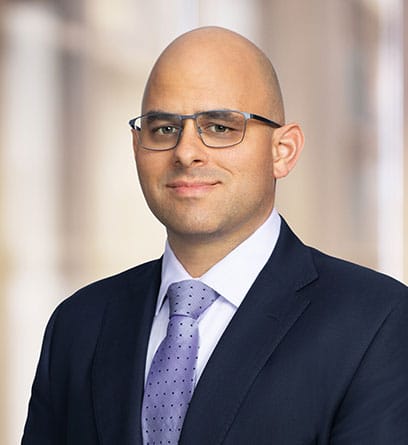Please see the latest article in this series, IPR Estoppel: The Federal Circuit finally speaks, and affirms the broader interpretation for estoppel, which provides an update on IPR estoppel in light of the Federal Circuit’s February 2022 Cal Tech decision.
As recently as 2018, there was uncertainty about the scope of inter partes review (IPR) estoppel under 35 U.S.C. § 315(e)(2). Under a broad interpretation, IPR estoppel precludes petitioners from asserting in a district court any grounds raised or that could have been raised in their IPR petitions. A narrower interpretation is that petitioners are precluded from asserting only those grounds that the Patent Trial and Appeal Board (PTAB) actually reviewed. Although the issue has not been definitively resolved, a clear consensus has emerged in favor of broader estoppel – the grounds raised or that could have been raised in the IPR petition define the scope of IPR estoppel.
Background
IPR estoppel applies to “any ground that the petitioner raised or reasonably could have raised during that inter partes review.” 35 U.S.C. § 315(e). In the past, a patent office regulation allowed the PTAB to pick which, if any, grounds might be considered during an IPR review. As a result, the grounds that a petitioner “could have raised during” the review were arguably limited to those the PTAB had chosen to consider. For example, in the underlying IPR at issue in Shaw Industries Group, Inc. v. Automated Creel Systems, Inc., 817 F.3d 1293, 1299-1300 (Fed. Cir. 2016), the PTAB instituted on just some of the grounds in the petition. The Federal Circuit found that the resulting estoppel did not apply to the grounds on which review was denied. As the court explained in a later opinion, “the non-instituted grounds do not become a part of the IPR. Accordingly, the non-instituted grounds were not raised and, as review was denied, could not be raised in the IPR. Therefore, the estoppel provisions of § 315(e)(1) do not apply.” HP Inc. v. MPHJ Tech. Inv., LLC, 817 F.3d 1339, 1347-48 (Fed. Cir. 2016) (citing Shaw, 817 F.3d at 1299-1300).
In the aftermath of Shaw, some district courts extended its holding beyond partial institutions. These courts reasoned that Shaw’s holding equally applied to grounds not raised in a petition, as those “grounds could not reasonably have been raised during IPR because during IPR, the PTAB has already selected the specific invalidity grounds for consideration through its grant of the IPR petition.” Cal. Inst. of Tech. v. Broadcom Ltd., 2018 WL 7456042, at *4 (C.D. Cal. Dec. 28, 2018) (describing analysis of narrow cases); see also Verinata Health, Inc. v. Ariosa Diagnostics, Inc., 2017 WL 235048, at *3 (N.D. Cal. Jan. 19, 2017). Other courts, however, recognized that this narrow interpretation “would render the phrase ‘reasonably could have raised’ in Section 315(e)(2) largely superfluous,” and thus limited Shaw to its partial institution fact pattern. Cal. Inst. of Tech., 2018 WL 7456042, at *4; see also Pavo Solutions LLC v. Kingston Tech. Co., 2020 WL 1049911, at *3 (C.D. Cal. Feb. 18, 2020).
The Supreme Court weighs in – indirectly
The Supreme Court’s 2018 opinion in SAS Institute Inc. v. Iancu, 138 S.Ct. 1348 precludes some of the circumstances in which narrow IPR estoppel could apply. In SAS Institute, the Court considered the PTAB’s putative authority to limit the grounds considered in IPR, holding that the PTAB does not have the authority to pick which issues it considers. The PTAB must either allow review on all grounds raised in an IPR petition or completely deny review. Under this holding, there will no longer be cases, such as Shaw, in which the PTAB has considered some but not all grounds raised in an IPR petition.
There remains the possibility that IPR estoppel would not apply to grounds that were never included in an IPR petition. Since SAS Institute, however, district courts have adopted the broader view of IPR estoppel. Indeed, the Southern District of California recently explained that “every post-SAS district court decision the Court has found addressing IPR estoppel and Shaw has rejected the contention that IPR estoppel does not apply to non-petitioned grounds.” Wi-LAN Inc. v. LG Elecs., Inc., 421 F. Supp. 3d 911, 924 (S.D. Cal. 2019) (surveying post-SAS cases). Indeed, even district courts that previously found a narrower scope of estoppel, such as the District of Massachusetts and the Northern District of California, now appear have joined the majority view post-SAS. See Palomar Techs., Inc. v. MRSI Sys., LLC, 373 F. Supp. 3d 322, at 331 (D. Mass. 2019); see also Asetek Danmark A/S v. CoolIT Sys., Inc., 2019 7589202, at *5-8 (N.D. Cal. Dec. 30, 2019).
Conclusion
Patent challengers should assume that anything raised or that could have been raised in their IPR petition will be subject to estoppel. There may be some room to argue that IPR estoppel is inapplicable to non-petitioned grounds, at least until the Federal Circuit considers the issue in light of SAS Institute and Shaw. But such an argument faces a virtually unanimous collection of recent district court authority finding broad IPR estoppel.
Additional articles on IPR estoppel
For additional articles on the topic of IPR estoppel in 2017 and 2018 prior to SAS Institute, please see:
- The shifting standard for IPR estoppel: Where are we now? (March 3, 2017).
- An update on the shifting standard for IPR estoppel (September 28, 2017).
- Part III: Another update on IPR estoppel in the courts and at the PTAB (March 30, 2018).
Tony Blum represents clients before the USPTO in post-grant proceedings and litigates patent infringement suits throughout the country.

